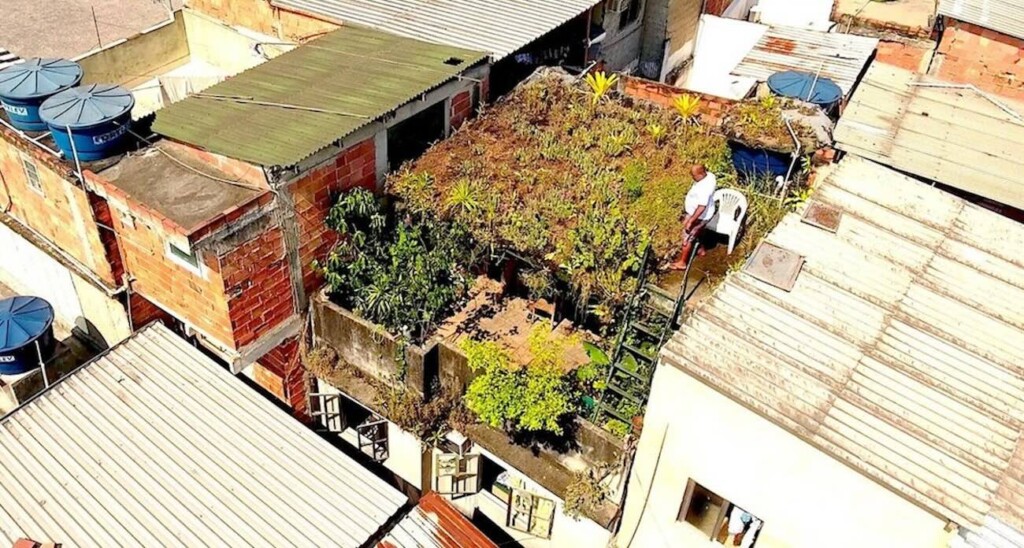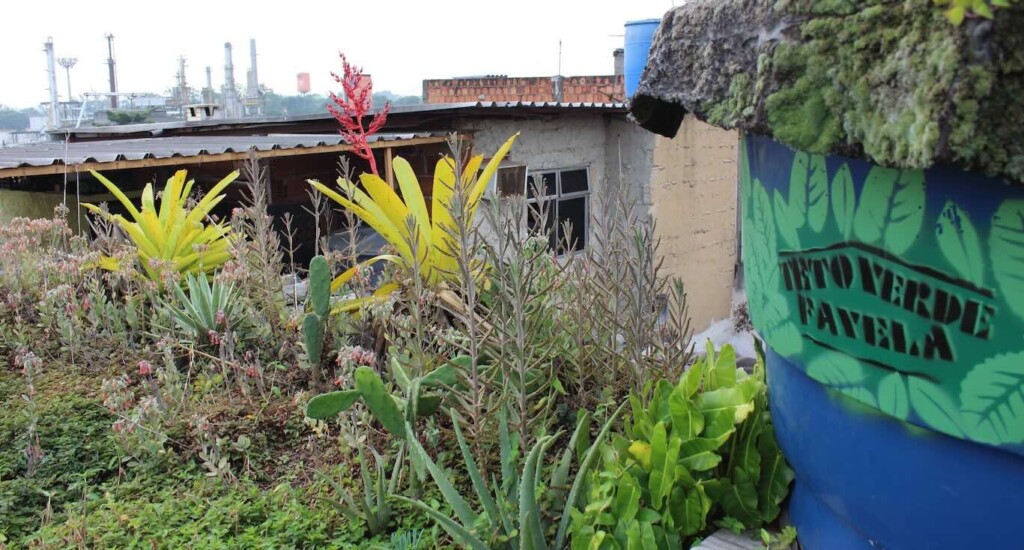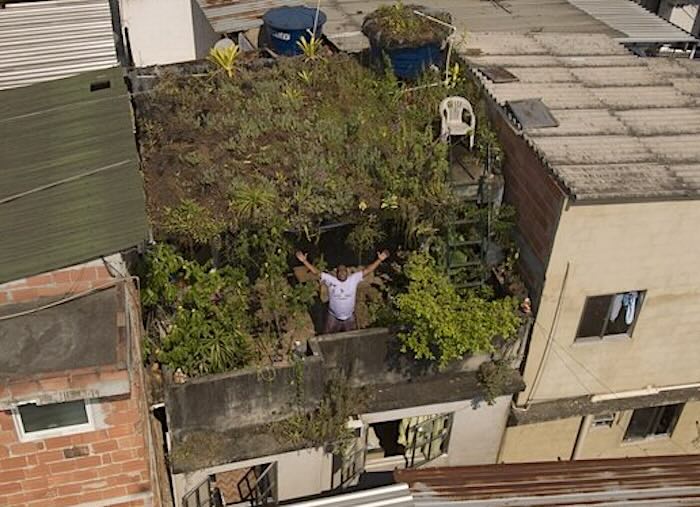Gray Slums of Brazil Turn Green with Rooftop Garden Project in Full Bloom

From the rooftop of a Rio de Janeiro slum, amid sheet after sheet of corrugated iron, one man reclines amid succulents and ficus.
His name is Luis Cassiano Silva, and he is the progenitor of the Teto Verde Favela, or Green Roofs Favela initiative, described by one academic as an exercise in “insurgent citizenship.”

Rio’s famous favelas are informal settlements neglected by the government that suffer from the urban heat island effect even more so than the city’s metropolitan core.
Winding alleys and corridors of exposed brick, metal, and concrete, without a tree to be seen, the favelas absorb heat from the Sun and radiate it out into the neighborhoods rather than out into space like a forest.
Taking responsibility for improving the lives of the community, in 2014 Cassiano began teaching and planting, gardening and growing, all over Parque Arara, one of Rio’s large favelas. Green roofs are used widely in Europe to climate-proof buildings.
They not only lead to a reduction in the heat island effect, but also contribute to slowing rainwater runoff, keeping indoor areas cooler, and keeping outdoor air cleaner and more moist.
While the informality of favelas makes it all but impossible for centralized government to implement similar plans at scale, and while rows and rows of rooftop plants make it difficult to film the next Jason Bourne movie, spontaneous community-led planning and self-reliance can succeed in insulating low-income earners from climate change’s worst effects, and according to one academic, should not be interfered with.
OTHER NEWS FROM BRAZIL: When A Loving Brazilian Street Dog Kept Visiting A Car Dealership, They Finally Hired Him as a Salesman
“City officials are concerned with addressing UHI in order to keep privileged areas of the city welcoming to outsiders, since a big portion of Rio’s economy is reliant on tourism, and tourist attractions are commonly found in the more privileged areas of the city,” writes Matheus Cardoso at the University of Texas in a review article.

“Green Roof Favela, then, challenges dominant approaches to planning by shedding light on the UHI effect in the marginalized peripheries of the city.”
Cassiano’s work has attracted the attention of multiple international news outlets, including NPR, Sky, and others.
Cassiano himself wrote that as much as the project aims to combat the urban heat island effect, his initiative mostly involves teaching people how to garden.
OTHER EFFORTS IN OTHER SLUMS: The Largest Landfill in Latin America has Been Turned into a Mangrove Forest
“Most children in the favela have no interaction with the forest and do not respect it… It’s a culture of destruction. We must educate them, slowly,” Cassiano describes. “In the favela, there are two colors [red and gray]. There are studies on color that say that red [signifies] passion, force, tension, explosion. But there is also gray—more melancholic, sad, depressing.”
“The favela is this: samba and love, but also sadness because it is poor. The color green will reduce violence. When we’re close to green space, we feel good. Favelas need this.”
SHARE This Great Green Initiative In Rio With Your Friends On Social Media…
>read more at © GoodNews
Views: 0